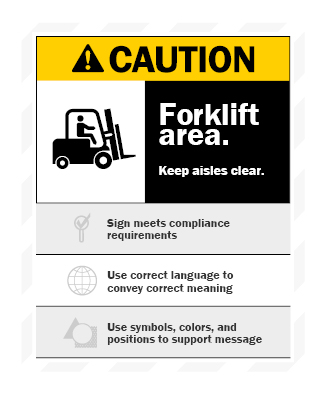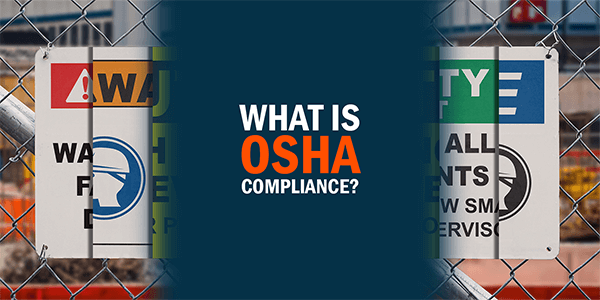Safety Sign Failures Can Be Costly

"Eat here and get gas." That's the actual wording on a large sign outside a store in Indiana. While the sign shares a simple message that seems accurate on one level, it might promote thoughts on another, uncomfortable level. Misspellings, using the wrong language, or other seemingly minor mistakes can oftentimes be costly to a business on a variety of levels. Not only could a company suffer by losing customers who see these errors as a reflection of poor quality, but there is also an expense of having to create new signs. Insufficient workplace signage can cause businesses to lose a large amount of time and money due to worker injury, time away, and fatalities, while also running the risk of attracting OSHA penalties.
Pay Attention to Signage
Signage of any kind can say something bigger about a business and workplace. If a business is making its workplace safety signage and other visual communication, it pays to take the extra time and thought on how safety signage can provide overall benefits. Here are a few ways to ensure workplace safety signage is effective, efficient, and compliant:
 1. Make sure the sign meets compliance.
1. Make sure the sign meets compliance.
The Occupational Safety and Health Administration has requirements for accident prevention signs and tags in general industry, 29 CFR 1910.145. In 2016, a company in New Jersey was hit by OSHA for violating several workplace safety rules. Among them, the company had inadequate and improper emergency exit signage. Examples of inadequate and improper signage could be a sign that does not direct occupants to an emergency exit, lacks one in line of sight to an exit, does not illuminate, or uses an incorrect color. Paper signage is also not sufficient for an emergency exit because it lacks durability and visibility properties.
Lisa Levy, an OSHA director in New Jersey, called the violations completely unacceptable. "In this day and age," she continued. "Providing employees with proper emergency exits is safety 101."
2. Make sure the sign is using the correct language to keep the correct meaning.
Messages are not effective if they cannot be seen or understood by workers. Chris Wu wanted to add bilingual safety signage in the storage and preparation areas of his large breakfast restaurant in Northern California. One of his bilingual workers agreed to help him translate messages that would be worded on the signs, but part of the message got lost. "There was an area for food preparation that had meat slicing machines. I wanted the sign to say in Spanish: ?Cutting machine in use, do not enter,'" Wu explained. However, months later, he learned from a delivery driver that the sign read: ?Machines do not enter.'
3. Use symbols, colors, and placement of signage that support the safety message and are easy to interpret.
The accurate interpretation of safety signs through their symbols, location, and color is crucial to prevent injuries. For example, on a shopping mall floor, a standing yellow A-frame caution sign displays an image of the common safety stick man in a sitting position with a few wavy lines floating behind him. The message was intended to warn of slippery floors, but the uncommon use of the image, symbol, and lack of text may conjure up other ideas. Is the stick man being chased by snakes? Does the stick man need the restroom?
Take the Time, Do it Right
The last thing a business wants is for workers and customers to be turned off. Having visual communication that is compliant, accurate, understandable, and of industrial quality is an important part of any business safety plan. Review workplace obstacles and give safety programs a jolt. Tools such as signs and floor marking can provide a visual support system for emergency preparedness and instructional awareness. Take a look around the facility and ensure there are adequate visual cues for the safety of work site visitors and employees.
Inspect the facility, document hazards, and get safety solutions for key areas of operations in our free Facility Safety & Identification Workbook.
Related Resources

4 Signs Your Safety Communication Needs an Update
Safety signs and labels that are up to date, clearly worded, and in tact play a key role in achieving ...
Read
Are Your Safety Signs Seen by Everybody?
Our society has become inundated with images of safety signs-on public transportation, in the workplace, in ...
Read
Everything You Need to Know To Be OSHA Signs and Labels Compliant
How Does OSHA Signage Compliance Support Workplace Safety? Occupational Health and Safety Administration ...
Read.png)





